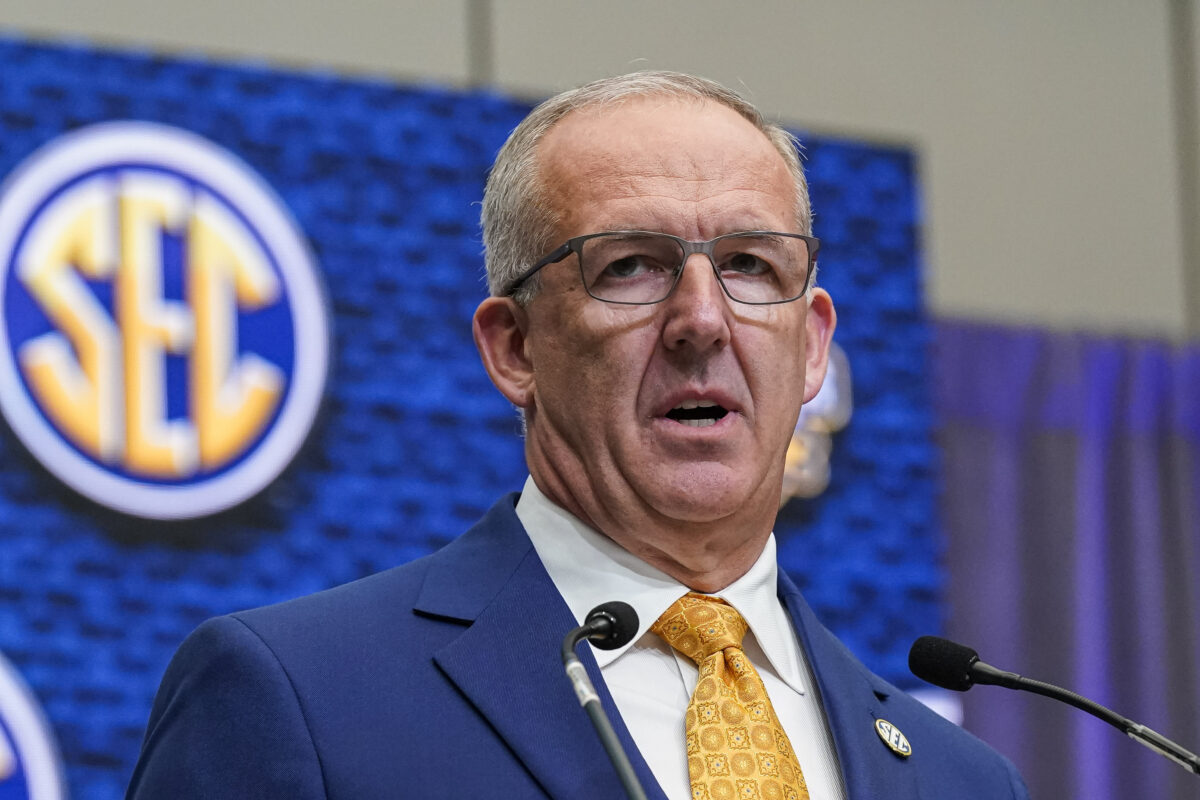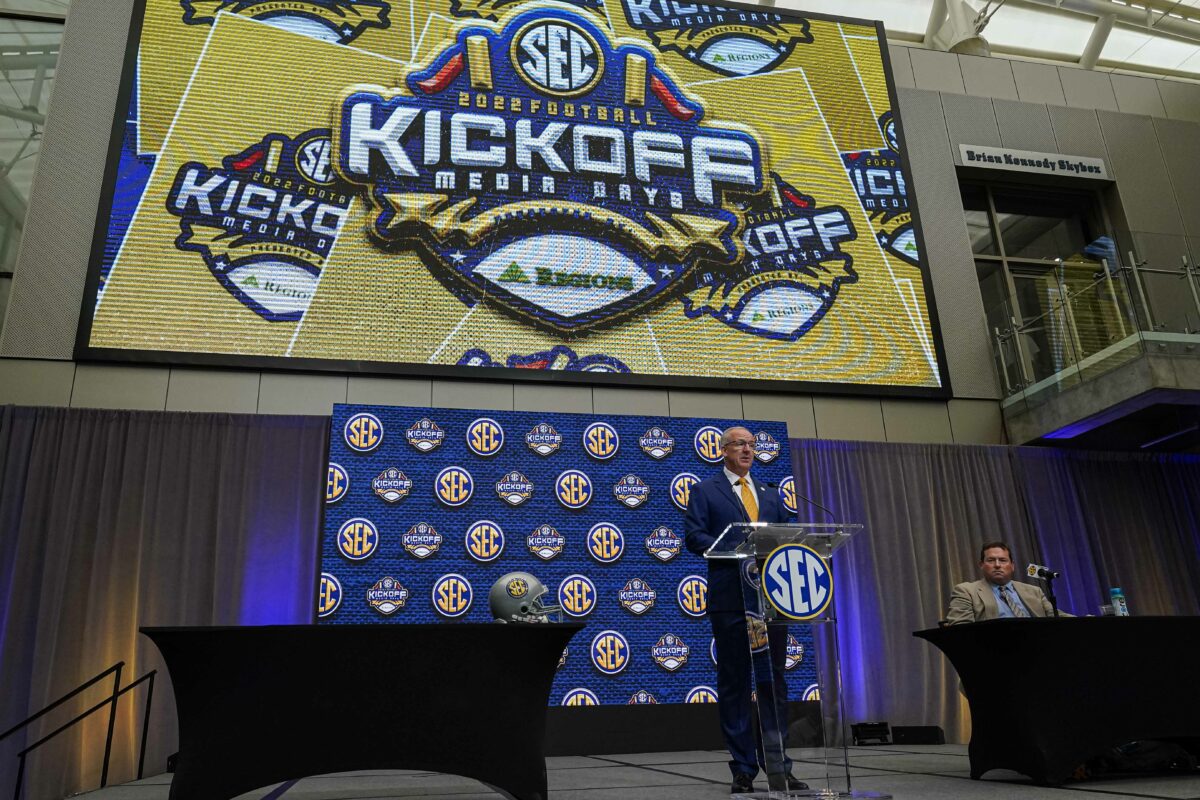At the start of the SEC spring meetings in Destin, Florida, on Tuesday, members of the league seem to be divided on a key issue that needs to be decided sooner rather than later.
When Oklahoma and Texas join the conference in 2024, will the league remain at an eight-game schedule, or will it follow the lead of some other conferences like the Big Ten and expand to nine games?
The consensus opinion seems to be that commissioner Greg Sankey, who said a decision on the matter could potentially be made this week, supports a nine-game model. Not everyone agrees, though, and there has been some pushback.
In a discussion with Greg McElroy and Cole Cubelic, SEC Network radio host Paul Finebaum weighed in on the ongoing discussion, agreeing with the sentiment that Sankey wants a nine-game slate.
“I’m surprised that we are now here on the first day of the spring meetings and this conversation is unresolved in relation to where we thought we would be. But it does seem to be the reality,” Finebaum said. “Exactly what has happened? I’m not certain. The speculation seems to be there could not be an appropriate accommodation to pay for those games that would allow the league to feel it was worth moving toward nine games.
“But if you had asked me a year ago would we have nine games in the final two days of May in 2023, I would’ve said yes. I would’ve put everything on it, and I think you guys probably would have, as well.”
McElroy and Finebaum agreed that the greatest implications of a nine-game schedule would surround the expanded College Football Playoff field. An extra conference game would present a team in contention with another opportunity for a loss, but Finebaum pointed out that it could also be important to maintain the value of the conference schedule with the Big Ten also landing a couple of big brands in expansion, calling it a “curious moment” for the SEC.
“I think you’re right, I even think it’s more toward the middle to the bottom of the league than it is even at the top,” Finebaum said. “Could an additional conference game cost somebody? It’s possible, but I think with 12 you run the bigger risk of having the conference schedule devalued. And I know that nobody in the SEC believes that could be true, but everyone else is playing more conference games, everyone else is trying to step up.”
“And I think it’s a curious moment for the league, however, I do believe if we see eight games it will be temporary. What I mean by that is it will be a one-year deal, I have a hard time believing this is something that will last a long time.”
Finebaum could be right about the SEC temporarily keeping the schedule at eight games, but the ongoing debate even as the calendar prepares to turn to June raises even more ominous questions about how the entire college football landscape will handle these wholesale changes, according to Finebaum.
“I think it would be presented as a bridge to the future in relation to Texas and Oklahoma fully integrating themselves, even though they’ll be in the league a year from now,” Finebaum said. “But I’m most interested in the reaction from around college football, because if it’s divided here, I can only imagine what it’s going to look like elsewhere.”
The 2023 season will in many ways present the last year of college football as we’ve known it for most of the modern era. But as the clock ticks toward these changes coming into effect, there are still many questions about what the future of the sport will actually look like logistically.
Perhaps we’ll leave the week with a clearer picture, but for now, it seems there are still many hurdles to be cleared.
[lawrence-auto-related count=3 category=1389]
Contact/Follow us @LSUTigersWire on Twitter, and like our page on Facebook to follow ongoing coverage of Louisiana State news, notes, and opinions.
Follow Tyler to continue the conversation on Twitter: @TylerNettuno







